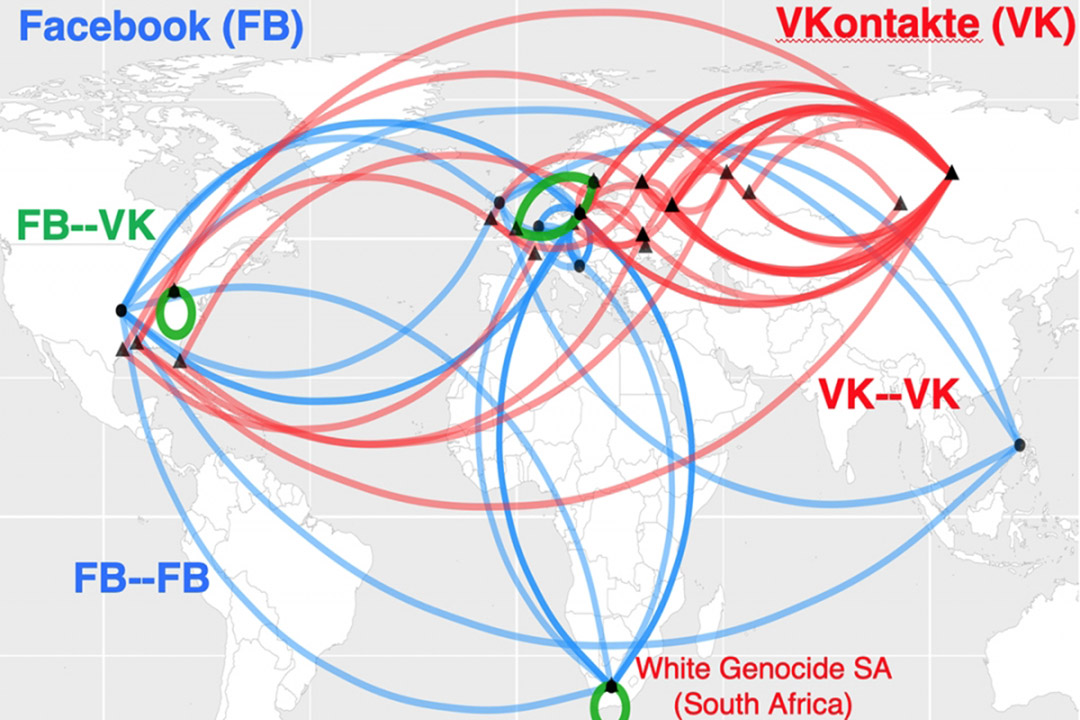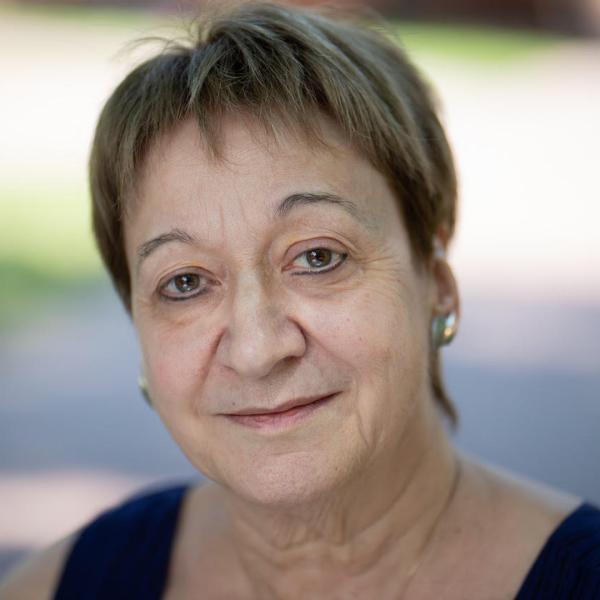Department News, Fall 2019
Message from the Chair
Department Spotlights
Department Kudos
Alumni Updates/Class Notes
Donor Recognition
Message from the Chair
Greetings from Corcoran Hall and the SEH,
Welcome to our 2019 Physics Newsletter. Our Physics Department is thriving in our reappointed Corcoran and Science and Engineering Halls. As you will read below, our program has expanded, and we are already bulging at the seams and are looking for new space in which to do our research. We still have our offices and labs at the Virginia Science and Technology Center to which I will retreat after my term as chair ends next summer. Please read with interest the sample of our most recent work and accomplishments.
Bill Briscoe, Chair
Department Spotlights
Novel Mapping Model Tracks How Hate Spreads and Adapts Online

Neil Johnson and his research team are mapping how hate clusters interconnect to spread narratives and attract new recruits.
A team of GW researchers studying hate on social media outlined the challenges to dismantling online hate groups worldwide in a new paper.
Supernovae Shine Light on Gamma-ray Bursts
Astrophysics Professor Chryssa Kouveliotou
New deep space observations by Columbian College’s Chryssa Kouveliotou and an international team of scientists provided insights into Gamma-ray bursts and their relations to supernova, the blindingly bright flashes from a dying star.
Physics, Professionally Speaking
Professor Alexander van der Horst
Alexander van der Horst’s redesigned capstone course, which equips physics students with the oral, written and ethical expertise needed to succeed in 21st-century careers, was profiled in the CCAS Spotlight newsmagazine.
Department Kudos
Faculty Kudos
Maria Solyanik was among the Dimitris N. Chorafas Foundation Award honorees for her work on the interaction of quantum vortex beams with matter.
William Briscoe was awarded a grant from the Department of Energy for $1.165 million.
Weiqun Peng received a $598,125 from the U.S. Department of Health and Human Services/National Institutes of Health for research on enzymes that regulate follicular helper T-cells for the human body’s immune systems.
Andrei Afanasev received a $363,658 grant from the U.S. Army Medical Research and Materiel Command to study interactions of twisted light at sub-wavelength scales.
Oleg Kargaltsev received a grant for $266,464 from NASA-Goddard for the multiwavelength identification of galactic high-energy sources.
Neil Johnson received a $95,822 grant from the Air Force Office of Scientific Research to study complex dynamical systems. He was also awarded a $50,000 grant from the National Science Foundation to study online dynamics. And he was featured in the Scientific American article “Artificial ‘Dumbness’ May Be a Solution for Engineering Smart Machines.”
Chryssa Kouveliotou received a $63,662 grant from NASA’s Goddard Center to use the NuStar space-based telescope for follow-up observations of galactic x-ray sources. She also received a $60,000 grant from NASA-Goddard-LOC and a $43,790 grant from the Smithsonian Astrophysical Observatory to observe swift galactic plane survey sources.
Sylvain Guiriec received a $65,144 grant from NASA for the development of the All-sky Medium Energy Gamma-ray Observatory (AMEGO), an astrophysics probe for exploring the sky. He also received a $42,000 grant from NASA for testing a new unified model for Gamma-ray emissions.
Oleg Kargaltsev was awarded a $50,000 grant from the Smithsonian Institution and NASA-Goddard to discover compact objects such as black holes, neutron stars and white dwarfs in intermediate globular stellar clusters.
Alexander van der Horst received a $34,911 fellowship from the National Science Foundation to study electromagnetic counterparts to gravitational waves.
CCAS students Ashley Atilano (English, Women’s Gender and Sexuality Studies), Jack Hirschman (Physics, Political Science) and Jeremy Marsh (Political Science) were recognized as the university's 2019 Distinguished Scholars.
Maxim Mai published research on new exotic states of matter in the Physical Review Letters.
Gerald Feldman authored the article “Why neutrons and protons are modified inside nuclei” for Nature and was quoted by Live Science in the article “Physicists Just Solved a 35-Year-Old Mystery Hidden Inside Atomic Cores.”
Alumni Updates/Class Notes
Zahin Hasan, BS ’12, is currently working for a D.C. healthcare nonprofit in business and strategy.
Nathalya Ramirez, BS ’19, is teaching physics and astronomy at Queens Gateway to Health Sciences in Jamaica, N. Y.
Jackie Veatch, BS ’19, is now a PhD student in physical oceanography at Rutgers University. Her research explores the effects of physical features of the ocean on trophic focusing in Palmer Deep, Antarctica.
Donor Recognition
Thank you for your support!
The Physics Department would like to gratefully acknowledge the following generous donors who made a gift to the department from July 1, 2018 – June 30, 2019.
Physics Department Donor List
+ Faculty/Staff | # Parent | ~ Student | * Friend
Derek Brehm, BS ’14
Karen Coleman, BS ’85
Mark Hughes, BA ’69, MS ’77
Peter Koehler, Ph.D., MS ’63
Rise Schnizlein, BS ’71
Ilana Spar, BA, BS ’08
Michael Thacher, BA ’70
Jacquelyn Veatch, BS ’19
Kara Zielinski, BS ’18 +




